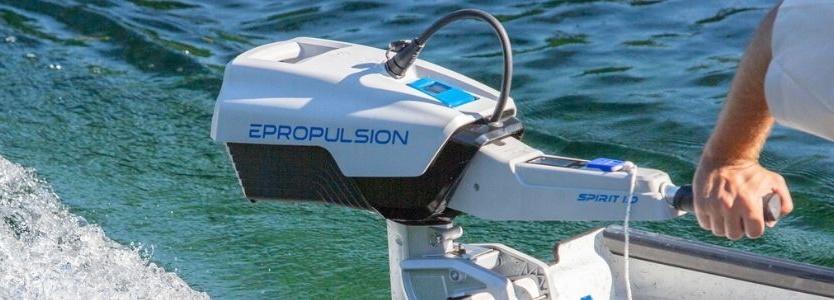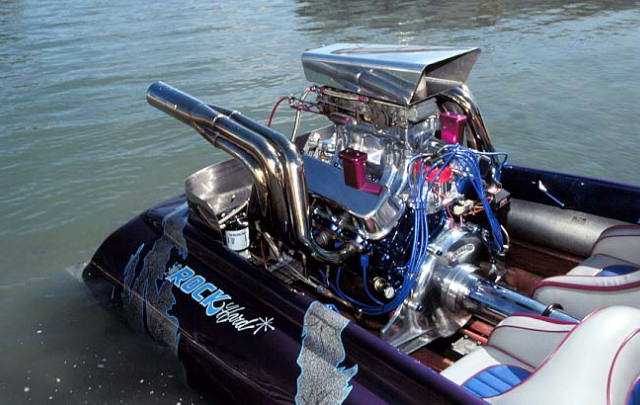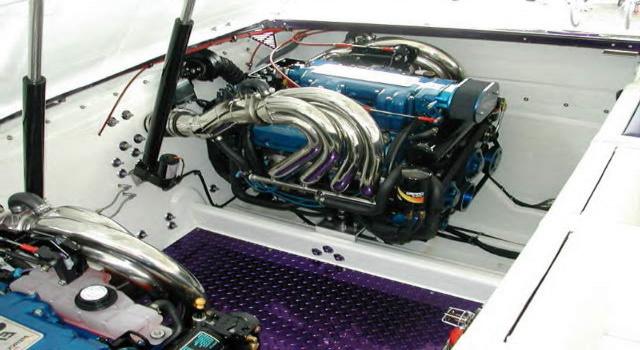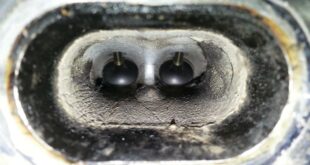Repairing or tuning your own boat is no problem with a little know-how and the right tools. Owners of their own boat are probably reluctant to leave their property in the hands of others. If necessary, repair and do everything alone or with the buddy. Smaller and larger repairs, should something go wrong, are just as much part of the repertoire as the tuning according to your own requirements. If the appropriate tools and suitable material are available, and if the owner has the necessary knowledge, this is something like that Outboard tuning, but also the small one boat repair no problem. Furthermore, with a little practice, working on your own boat is just as much fun and enjoyable as the actual water sports.
Tuning on the boat: outboard and engine
If you dare to have your own boat, you should be aware in advance that what exactly he is doing, A engine modification (Increasing performance) is always associated with a certain risk, since things can quickly go wrong on the water. Before you start the project, find out more about your specific tasks. For example, other aspects have to be considered with a Mercury outboard tuning than with a Yamaha outboard. Information can be obtained from: Contact with other hobbyists who have already gained experience on the subject of tuning boat engines. By reading well in one of the many internet forums (also YouTube & Co.). There you can (must) ask for tips and advice. The information obtained in combination with the right tools and high-quality spare parts make outboard tuning a success. We are sure of that!
Outboard tuning for more horsepower
By tuning the outboard, the boat gets a few extra horsepower. For this purpose, the engine is usually opened up and individual components such as the crankshaft or camshaft, the exhaust, the air filter or the carburetor are replaced with more powerful components. As a result, the engine achieves more power without having to swap the engine for a more powerful engine. Also a Chiptuning, similar to what is known from passenger cars, can be carried out on newer engines. But if you want to do this work yourself, you need high-quality tools. If you can rely on the tool and also on your own skills, then the work is fun.
Outboard - Propeller Tuning
The outboard motor drives a propeller on most motor boats. This spins in the water and the boat moves forward. In order for the propeller to work as efficiently as possible for the drive, the propeller must absolutely match the engine. The speed range of the propeller must be matched to the maximum speed of the engine. If you stick to this principle, you can experiment with various propellers. This is the only way to find out whether the model really fits your engine. An exchange with like-minded people is worth its weight in gold in this area. One or the other hobbyist will certainly have the right one for the boat model that you also use yourself, with the same engine tuning propeller found. So, no fear, "ask for"!
Boat repairs: the most common boat repairs
Buying, restoring and, if necessary, repairing a used motor or sailing boat can be a very extensive task. But it is precisely these boat repairs that inspire many hobbyists and they represent another hobby in addition to water sports. Below is a list of typical work on a boat. These often arise when a used motor or sailing boat is bought. If you have already been on the road with your own boat for a few years, these boat repairs are also popular.
Fiberglass (GRP) patches
Today, the hull of most boats is made of fiberglass (GRP for short). Over time, hull damage can occur and the boat is no longer XNUMX% watertight. The GRP can be repaired with very little effort. Minor damage will be sanded and then re-spackled. In the case of major damage in the form of real leaks, however, it depends on how deep they penetrate the GRP. If the stability of the boat is already threatened by a deep hole, the corresponding point must be be reinforced, before it can be fired. The corresponding area is laminated with the help of a glass fiber mat and then hardened with polyester resin. The glass fiber mat represents the corresponding reinforcement material.
Touching up the gelcoat!
Fiberglass boats are usually coated with an exterior paint called gel coat. If damage occurs in the underlying GRP, the paint layer must also be touched up. Occasionally only the gelcoat itself is scratched or chipped. The gelcoat represents the protective barrier for the GRP, which is why such supposedly minor defects should be taken seriously and repaired. It is important that the protective barrier in the form of the gelcoat always remains intact. The easiest way to work on the boat hull is to use a lifting platform. This allows the boat to be brought to the appropriate working height. The areas to be repaired can then be reached safely and easily.
The following note is essential: For safety reasons, tuningblog recommends all repair, inspection and maintenance work exclusively to be carried out in a specialist workshop! Although our information is summarized to the best of our knowledge and belief, we cannot assume any liability for the content. All information is therefore "without guarantee".
Of course, that wasn't the end of it!
In this tuningblog category there are guides and instructions for common defects/repairs on the vehicle and for installing accessories/tuning parts. Our articles explain in a simple way common defects and the corresponding repairs, as well as explaining how the first signs of a defect become noticeable. In most cases, we also have initial clues to the repair instructions in our repair instructions approximate The costs of the pending repair are listed. The goal of our subcategory “Auto Repair Guide“ is to create a head start in knowledge for the next visit to the workshop with initial tips. This may save you from tedious troubleshooting and small things can perhaps be done directly on your own. The same applies, of course, to the installation of accessories/tuning parts. Here, too, we would like to help with the implementation with instructions and tips. There are many other posts on this as well. Below is an excerpt of the last and HERE there are all previous instructions:
"tuningblog.eu" - we keep you up to date on the subject of autotuning and car styling with our tuning magazine and present you with the latest tuned vehicles from all over the world every day. It's best to subscribe to ours Feed and will automatically be informed as soon as there is something new about this post, and of course also to all other contributions.
 tuningblog.eu Your magazine about tuning the car
tuningblog.eu Your magazine about tuning the car






